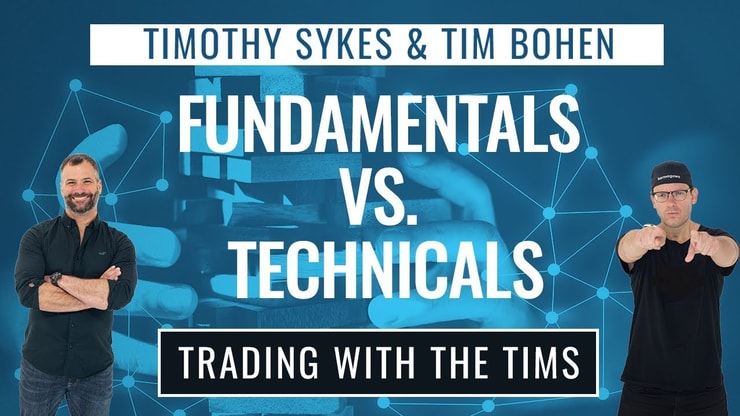*Written by AI, Edited by Humans
The Wedge Pattern is a chart formation used in technical analysis to predict price movements. It’s a powerful tool for traders looking to identify breakout opportunities in both bullish and bearish markets. This article will guide you through what a Wedge Pattern is, its types, and how to effectively trade using this pattern. Let’s dive in and elevate your trading game.
Table of Contents
- 1 What Is a Wedge Pattern?
- 2 Types of Wedge Patterns
- 3 How To Trade Wedge Chart Patterns
- 4 Benefits of Trading with Wedge Patterns
- 5 Disadvantages of Trading the Wedge Pattern
- 6 How To Manage Risk Using Stop Loss Strategies
- 7 Is a Wedge a Continuation or a Reversal Pattern?
- 8 Is a Falling Wedge Pattern Bullish?
- 9 Is a Rising Wedge Pattern Bullish or Bearish?
- 10 Frequently Asked Questions
- 10.1 How Does a Rising Wedge Pattern Impact Market Trends?
- 10.2 When Is the Optimal Time to Trade a Falling Wedge Pattern?
- 10.3 How To Mitigate Risks When Trading Wedge Patterns?
- 10.4 Is a Wedge Pattern Bullish?
- 10.5 What Is the Formation of a Wedge Pattern?
- 10.6 How Are Wedges Different from Triangles?
- 10.7 What Should Investors Consider When Trading Wedges?
- 10.8 How Does Price Consolidation Impact Wedges?
- 10.9 What Information Should You Look for in Wedge Patterns?
- 10.10 Are There Fixed Criteria for Identifying Bottoms in Wedges?
What Is a Wedge Pattern?
A Wedge Pattern is a chart pattern that signals a future reversal or continuation of the trend. It’s formed by drawing trend lines that connect a series of sequentially higher peaks and higher troughs for an uptrend, or lower peaks and lower troughs for a downtrend. This pattern is a must-know for traders who rely on technical analysis.
Characteristics of a Wedge
The Wedge Pattern is characterized by converging trend lines over a course of typically 10 to 50 trading periods. The pattern is identified by a series of highs and lows that contract into a narrower range, forming the shape of a wedge. The breakout direction, either to the upside or downside, gives traders an edge in predicting the next move.
Types of Wedge Patterns
There are two main types of Wedge Patterns: the Rising Wedge and the Falling Wedge. Both serve as indicators for future price action but differ in their formation and what they signify.
If you’re intrigued by the Rising and Falling Wedge patterns, you might want to expand your repertoire. While Rising and Falling Wedges are staples in technical analysis, there are other patterns that can offer you valuable insights. Take the Rectangle Pattern, for instance. It’s another formation that can signal either a continuation or reversal, depending on the market context. The more patterns you’re familiar with, the more versatile your trading strategy becomes. Ready to broaden your technical analysis skills? Dive into my detailed guide on the Rectangle Pattern.
Rising Wedge Pattern
A Rising Wedge is generally considered bearish and is usually found in downtrends. It’s formed when the price consolidates between upward sloping support and resistance lines. When you spot this pattern, prepare for a potential downside breakout.
More Breaking News
- Is TeraWulf Inc.’s Stock Worth the Hype After Its Recent Moves?
- From Win to More Wins: Discover How Direct Digital Holdings Inc. Is Celebrating Success
- TSMC’s Revenue Surge: What Does it Mean for the Future?
Falling Wedge Pattern
The Falling Wedge is typically bullish and often appears in uptrends. This pattern is formed when the market consolidates while making lower lows and lower highs. Traders often look for an upside breakout when they identify a Falling Wedge.
How To Trade Wedge Chart Patterns
Trading Wedge Patterns involves understanding the breakout direction, setting entry and exit points, and managing risk.
If you’re seeking alternatives to Wedge Patterns for trading strategies, pay attention. Wedge Patterns are great for identifying breakout directions, but they’re not the only game in town. The Expanding Wedge Pattern is another tool that can help you understand market volatility and potential breakout directions. It’s especially useful when you’re looking for patterns that indicate an increase in volatility. Want to add more depth to your trading toolbox? Check out my article on the Expanding Wedge Pattern.
Let’s break it down.
Identifying Breakout Direction
The first step is to identify the breakout direction. This is crucial for setting up your trade. A breakout from the upper trend line signals a potential bullish move, while a breakout from the lower trend line indicates a possible bearish move.
It all comes down to charting.
When it comes to charts, StocksToTrade is first on my list. It’s a powerful trading platform that integrates with most major brokers. I helped to design it, which means it has all the trading indicators, news sources, and stock screening capabilities that traders like me look for in a platform.
Grab your 14-day StocksToTrade trial today — it’s only $7!
Setting Entry and Exit Points
Your entry point should be as close to the breakout point as possible. For exit points, use previous levels of support or resistance as your target. This strategy maximizes profits while minimizing risk.
Managing Risk with Stop Loss
Always use a stop-loss order to manage your risk. Place the stop-loss just below the breakout point for a bullish breakout and just above for a bearish breakout. This strategy ensures you’re out of the trade if the breakout fails.
Benefits of Trading with Wedge Patterns
Wedge Patterns offer several advantages that can make your trading more effective and profitable.
Saves Time
One of the key benefits is the time-saving aspect. Once you’re familiar with Wedge Patterns, spotting them becomes quick and easy, allowing you to make timely trading decisions.
Low Risk
Wedge Patterns are generally considered low-risk trading setups, especially when used in conjunction with other indicators and proper risk management strategies.
High Profit Margins
When traded correctly, Wedge Patterns can offer high profit margins. The clear breakout points and trend direction help traders set precise entry and exit points, maximizing profitability.
Ability To Make Accurate Predictions About Price Moves
Wedge Patterns are reliable for predicting future price moves, especially when confirmed by other indicators like volume or momentum. This predictive power can be a game-changer in your trading strategy.
Disadvantages of Trading the Wedge Pattern
While Wedge Patterns offer many benefits, they’re not foolproof. One downside is that they can sometimes produce false breakouts, leading to losses. Always use them as part of a well-rounded trading strategy.
While we’re on the subject of potential pitfalls, let’s talk about other patterns that come with their own sets of challenges. Every pattern has its drawbacks, and the Wedge Pattern is no exception. If you’re looking to diversify your approach, consider the Bear Pennant Pattern. While it’s another useful tool for predicting market movements, it also requires a keen eye for detail and impeccable timing to avoid false breakouts. Curious about other patterns with their own pros and cons? Take a look at my insights on the Bear Pennant Pattern.
How To Manage Risk Using Stop Loss Strategies
Managing risk is crucial in trading, and Wedge Patterns are no exception. Use stop-loss orders to limit potential losses. Place your stop-loss just above or below the breakout point, depending on the direction of the breakout.
Is a Wedge a Continuation or a Reversal Pattern?
A Wedge can serve as both a continuation and a reversal pattern. A Rising Wedge in a downtrend or a Falling Wedge in an uptrend often acts as a continuation pattern. Conversely, a Rising Wedge in an uptrend and a Falling Wedge in a downtrend can act as reversal patterns.
Is a Falling Wedge Pattern Bullish?
Yes, a Falling Wedge Pattern is generally considered bullish. It often appears in uptrends and signals a potential upside breakout.
Is a Rising Wedge Pattern Bullish or Bearish?
A Rising Wedge Pattern is typically bearish. It’s often found in downtrends and signals a potential downside breakout.
It isn’t a silver bullet for your trading plan — but the Wedge Pattern is one of the many topics you should learn as part of your trading education!
Trading isn’t rocket science. It’s a skill you build and work on like any other. Trading has changed my life, and I think this way of life should be open to more people…
I’ve built my Trading Challenge to pass on the things I had to learn for myself. It’s the kind of community that I wish I had when I was starting out.
We don’t accept everyone. If you’re up for the challenge — I want to hear from you.
Apply to the Trading Challenge here.
Trading is a battlefield. The more knowledge you have, the better prepared you’ll be.
Do you trade Wedge Patterns? Let me know in the comments — I love hearing from my readers!
Frequently Asked Questions
How Does a Rising Wedge Pattern Impact Market Trends?
A Rising Wedge Pattern usually indicates a bearish reversal in market trends. When this pattern appears, traders often prepare for a potential downside breakout.
When Is the Optimal Time to Trade a Falling Wedge Pattern?
The optimal time to trade a Falling Wedge Pattern is upon a breakout above the upper trend line, signaling a potential bullish move.
How To Mitigate Risks When Trading Wedge Patterns?
Mitigating risks involves using stop-loss orders and combining Wedge Patterns with other indicators for confirmation.
Is a Wedge Pattern Bullish?
A Falling Wedge is generally bullish, while a Rising Wedge is generally bearish.
What Is the Formation of a Wedge Pattern?
The formation of a Wedge Pattern involves price action that contracts over time, forming a wedge shape bounded by two converging trend lines.
How Are Wedges Different from Triangles?
Wedges and triangles differ mainly in their slope and structure. In a wedge formation, the lines tend to converge at a more narrow angle compared to triangles. Understanding these shapes is crucial for analyzing stocks or forex markets.
What Should Investors Consider When Trading Wedges?
When trading wedges, investors should look into options, examine the trades they are considering, and gauge their position in the market. The amount invested should align with their long-term strategy, especially in the futures market.
How Does Price Consolidation Impact Wedges?
Price consolidation plays a significant role in forming the wedge pattern. In most cases, consolidation occurs when there is a balance between buyers and sellers. The strength of this balance could determine the success of trading based on wedge patterns.
What Information Should You Look for in Wedge Patterns?
When examining wedge patterns, seek relevant information from multiple sources, such as content shared on Instagram or other platforms. Always compare these cases with real-world examples to validate the accuracy of the given information.
Are There Fixed Criteria for Identifying Bottoms in Wedges?
In identifying bottoms in wedges, look for a fixed set of criteria. These may include a specific strength level or balance in the market. Make sure to evaluate these bottoms within the context of current prices and stocks.




Leave a reply